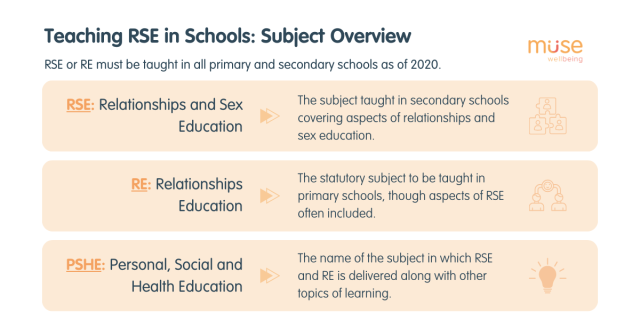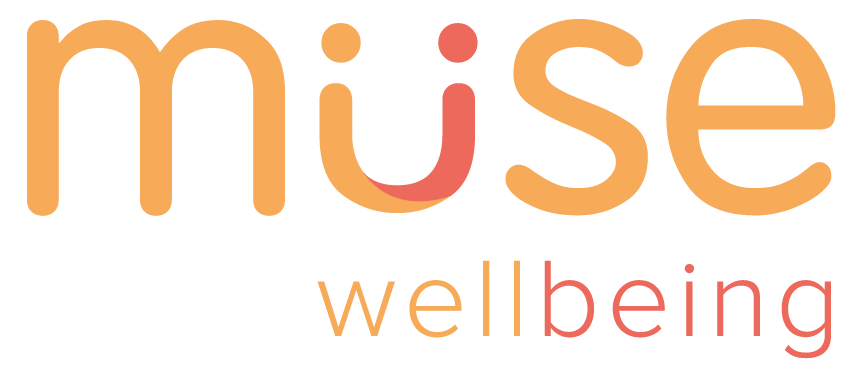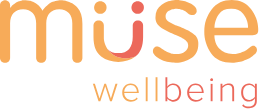What is RSE: Teaching RSE in Primary Schools

Charlotte is an experienced educator working in mainstream and SEN schools in northern England. She loves all things about reading!

David is the Muse Wellbeing director and lead curriculum developer. His Main passions include education, surfing and travelling.
What is RSE: Teaching RSE in Primary Schools
RSE (relationships and sex education) was made a mandatory subject in schools as of September 2020. As a teacher, understanding the learning content explored within RSE is highly important to ensure students are given the best provision possible.
Relationships Education (RE) is taught in primary schools. Relationships and Sex Education is taught in secondary schools. However, many primary schools choose to deliver and explore some elements of sex education with their students in tailored and age sensitive lessons. This may include introducing the concept of puberty to children in upper Key Stage 2 classrooms.
Sharing the learning objectives and content of a school’s RSE curriculum with all stakeholders (parents, guardians, school board members) is paramount to the success of the learning program.
What Does RSE Stand For?
RSE stands for relationships and sex education. As of 2020, RSE and RE are mandatory subjects in all schools. They are often delivered by schools as a wider part of a PSHE curriculum.
RSE and RE are often referred to as RSHE (relationships, sex and health education). It is important to understand the many acronyms associated with teaching RSE to avoid confusion.

What is the Importance of RSE?
RSE gives children the toolkit and skills to develop and sustain healthy and caring relationships. The curriculum promotes social skills, positive values and emotional resilience, all essential in our quickly changing world. In primary schools, the core focus of relationships education lies within exploring the characteristics of relationships with peers, friends, family members and wider participants of their communities.
Students will begin by exploring what a relationship is (and the different types of these) as well as identifying people that can help and support them. Throughout these lessons, children will also begin to develop an understanding of the positive qualities a person can show: honesty, kindness, truthfulness to name just a few.
Teachers will also support children in understanding when relationships may be becoming harmful or having a negative effect on their wellbeing. Many PSHE curriculums, including Muse Wellbeing, often approach exploring these topics through hands-on activities such as class discussions or role play activities.
Sex education is not compulsory in primary schools. However, some schools or curriculum providers incorporate aspects of sex education within their primary learning programmes. This may include topics such as exploring how our body changes over time and puberty in upper key stage 2.
Exploring the Three Elements of RSE
There are three main topics of learning within RSE. Each strand of learning covers key skills and understanding to help students lead happy, positive and healthy lives.
Relationships Education
The aim of relationships education is to establish the foundations of positive and respectful relationships, with a focus on family and friendships across various contexts, including the online environment, too.
Developing and maintaining positive relationships, as well as identifying ones that may negatively impact our wellbeing, are vital skills for children and adults alike. This is important both in the non-digital and online interactions. Highlighting strategies for maintaining healthy relationships, such as teaching principles of space, consent and boundaries, is of huge importance.
RSE lessons are an excellent opportunity to explore and develop a culture of respect for one another in the classroom. These skills should be nurtured beyond the school boundaries to the wider community and beyond.
Sex Education
Sex education is not compulsory for primary aged students, though many schools offer age appropriate and needs specific lessons. A commonly taught primary school sex education topic is puberty. This is most commonly delivered to year 5 and year 6 classrooms. An introduction to puberty can help normalise discussions around the topic while preparing students who may also be experiencing this at younger ages.
Another aspect of sex education that’s essential for learners in primary school is the concept of consent (which also covers parts of relationship education). Consent begins with the learning concepts of understanding our peers’ personal and physical boundaries, such as acceptable touch whilst working and learning within our shared classrooms or outside our school communities.
Health Education
Health Education is a crucial part of primary school curriculums and aims to promote the knowledge and skills essential for making informed decisions about health and wellbeing. Health Education helps children recognize potential health issues, fosters open communication with trusted adults, promotes respect and empathy for themselves and others, and encourages them to seek support about their own wellbeing.
Health education classes should begin to instill in young learners the importance of a healthy lifestyle and diet, providing a strong knowledge base for ways to live positive and productive lives.
Muse Wellbeing
Subscribe for RSHE & Wellbeing Updates & Learning Resources

Copyright © 2025 Muse | All Rights Reserved.
Would you like to logout of Muse Wellbeing?


